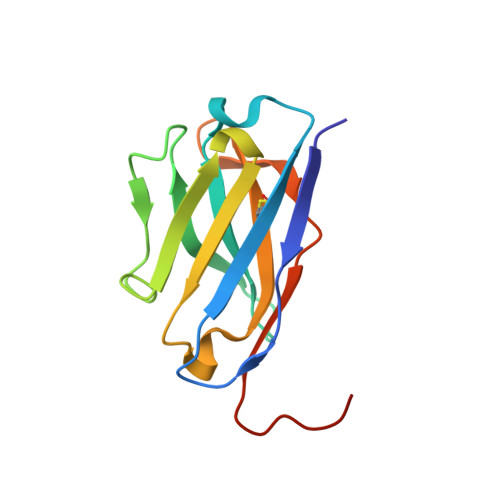1.3 A X-ray structure of an antibody Fv fragment used for induced membrane-protein crystallization.
Essen, L.O., Harrenga, A., Ostermeier, C., Michel, H.(2003) Acta Crystallogr D Biol Crystallogr 59: 677-687
- PubMed: 12657787
- DOI: https://doi.org/10.1107/s0907444903002233
- Primary Citation of Related Structures:
1MQK - PubMed Abstract:
The antibody Fv fragment 7E2 has previously been employed in the induced crystallization of the integral membrane protein cytochrome c oxidase from Paracoccus denitrificans. The 1.3 A X-ray structure of the uncomplexed antibody fragment reveals conserved water networks on the surfaces of the framework regions. A novel consensus motif for water coordination, XX(S/T), is found along the edges of the beta-sandwich, where a water molecule forms hydrogen bonds to the carbonyl O atom of a residue at position N and the OG hydroxyl groups of conserved serines or threonines at position N + 2. Multiple conformations were found in the hydrophobic core for residues IleL21, LeuL33 and the disulfide bridges. An internal water molecule that is compatible with only one of the three packing states of the V(L) core suggests local 'breathing' of the variable domain. TrpH47, a conserved key residue of the V(H)/V(L) interface, is crucially involved in the formation of the antigen-binding site by adopting a novel conformation that specifically stabilizes the non-canonical CDR-L3 loop. Finally, a comparison with 7E2-cytochrome c oxidase complexes demonstrates that binding of this membrane-bound antigen proceeds without major conformational changes of the 7E2 antibody fragment.
Organizational Affiliation:
Department of Chemsitry, Philipps University, Marburg, Germany. essen@chemie.uni-marburg.de



















